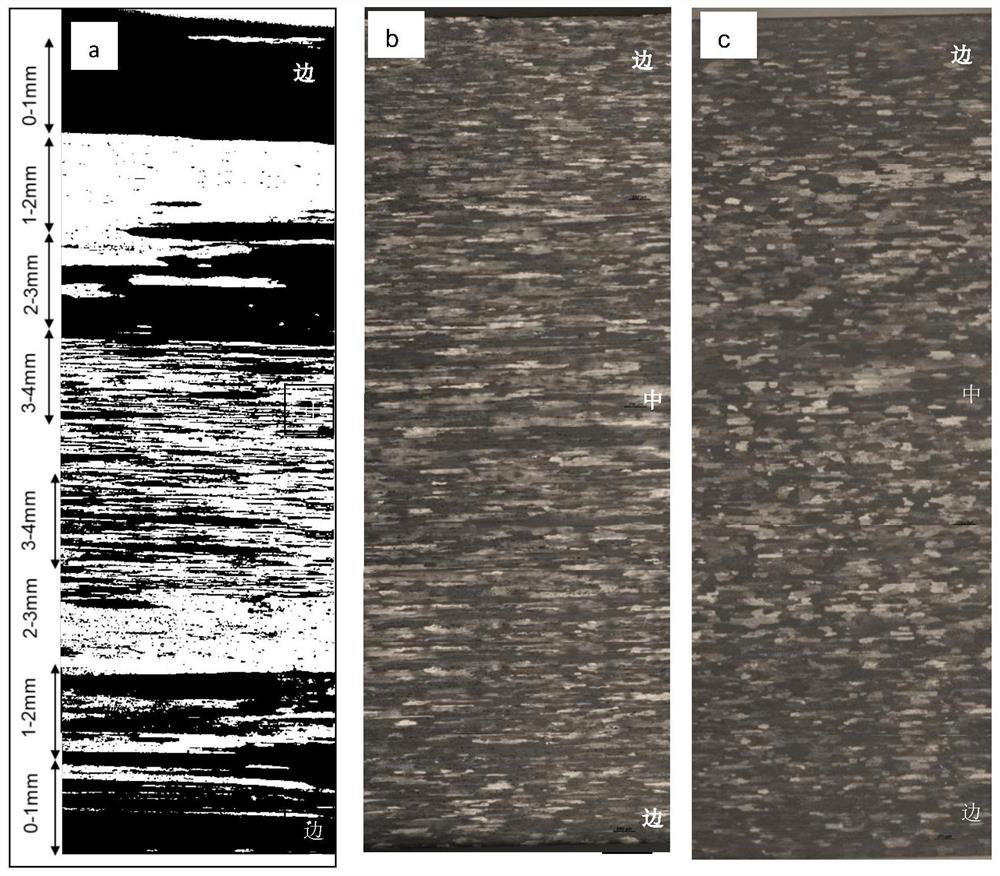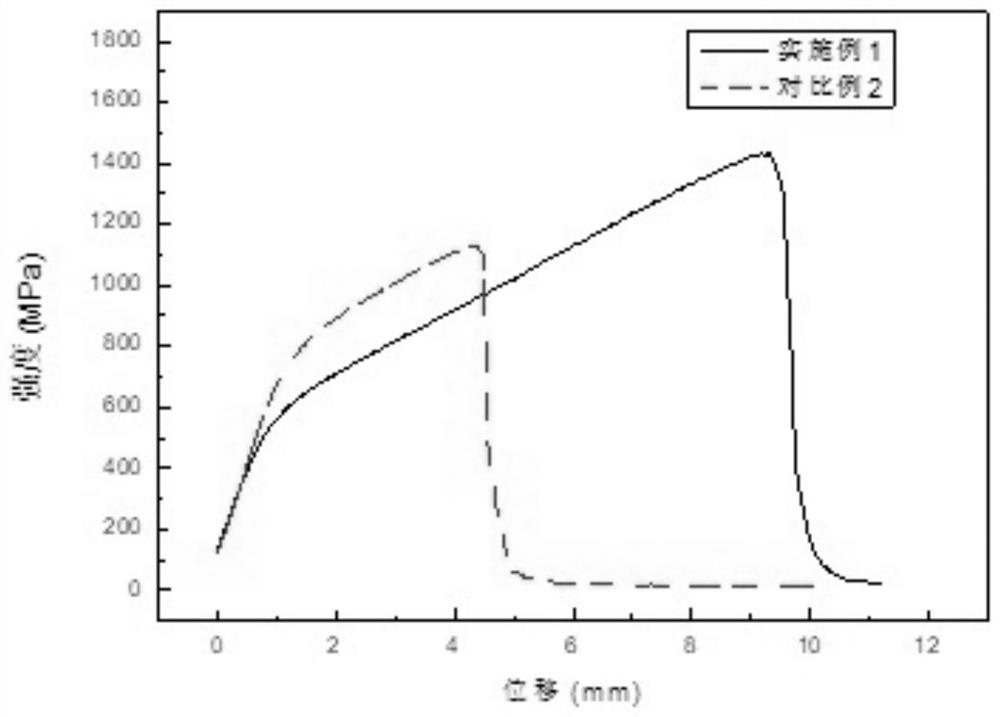Processing method of 2xxx series aluminum alloy bars and wires for fasteners
A processing method and technology of aluminum alloy, applied in the field of aluminum alloy processing, can solve the problems of inappropriate ingot processing deformation method, late development of high-strength aluminum alloy fasteners, large gap between production, development and application, and achieve the realization of plasticity and mechanics. Performance, process optimization, fine grain effect
- Summary
- Abstract
- Description
- Claims
- Application Information
AI Technical Summary
Problems solved by technology
Method used
Image
Examples
Embodiment 1
[0039] The composition and weight percentage of the aluminum alloy are: Cu 4.18%, Mg 1.48%, Mn 0.6%, Cr 0.02%, Ti 0.02%, Fe 0.17%, Si 0.07%, Zn 0.1%, and the rest is Al. The specific production process such as figure 1 , the actual operation steps are as follows:
[0040] (1) Perform homogenization heat treatment on the φ410mm ingot obtained by semi-continuous casting of the alloy, raise the temperature to 450°C at a heating rate of 66°C / h and keep it for 5h, then raise the temperature to 498°C at a heating rate of 10°C / h and keep it for 38h, air cooling;
[0041] (2) Extrude the ingot after soaking, the extrusion temperature is 430-440°C, and the extrusion rate is 0.4-0.8mm / min; extrude the φ410mm ingot to the φ91mm rod once, and then perform the secondary extrusion to φ9.5mm bar;
[0042] (3) Drawing the extruded bar, from φ9.5mm bar to φ8mm bar;
[0043] (4) Perform solution heat treatment on the drawn bar, and keep it at 495°C for 1h;
[0044] (5) On-line quenching, pr...
Embodiment 2
[0046] The composition and weight percentage of the aluminum alloy are: Cu 4.18%, Mg 1.48%, Mn 0.6%, Cr 0.02%, Ti 0.02%, Fe 0.17%, Si 0.07%, Zn 0.1%, and the rest is Al. The specific production process such as figure 1 , the actual operation steps are as follows:
[0047] (1) Perform homogenization heat treatment on the φ410mm ingot obtained by semi-continuous casting of the alloy, raise the temperature to 450°C at a heating rate of 66°C / h and keep it for 5h, then raise the temperature to 498°C at a heating rate of 10°C / h and keep it for 38h, air cooling;
[0048] (2) Extrude the ingot after soaking, the extrusion temperature is 430-440°C, and the extrusion rate is 0.4-0.8mm / min; extrude the φ410mm ingot to the φ91mm rod once, and then perform the secondary extrusion to φ10.4mm bar;
[0049] (3) Perform annealing heat treatment on the extruded bar to soften it, and the annealing process is 350°C / 1h;
[0050] (4) Drawing the extruded bar, from φ10.4mm bar to φ9mm bar;
[00...
Embodiment 3
[0054] The composition and weight percentage of the aluminum alloy are: Cu 4.5%, Mg 1.48%, Mn 0.6%, Cr 0.02%, Ti 0.02%, Fe 0.18%, Si 0.06%, Zn 0.1%, and the rest is Al. The specific production process such as figure 1 , the actual operation steps are as follows:
[0055] (1) Perform homogenization heat treatment on the φ410mm ingot obtained by semi-continuous casting of the alloy, raise the temperature to 450°C at a heating rate of 66°C / h and keep it for 5h, then raise the temperature to 498°C at a heating rate of 10°C / h and keep it for 38h, air cooling;
[0056] (2) Extrude the ingot after soaking, the extrusion temperature is 430-440°C, and the extrusion rate is 0.4-0.8mm / min; extrude the φ410mm ingot to the φ91mm rod once, and then perform the secondary extrusion to φ9.2mm bar;
[0057] (3) Carry out annealing heat treatment to the extruded bar to soften, and the annealing process is 400°C / 1h;
[0058] (4) Drawing the extruded bar, from φ9.2mm bar to φ8mm bar;
[0059] ...
PUM
| Property | Measurement | Unit |
|---|---|---|
| particle size | aaaaa | aaaaa |
| yield strength | aaaaa | aaaaa |
| tensile strength | aaaaa | aaaaa |
Abstract
Description
Claims
Application Information
 Login to View More
Login to View More - R&D Engineer
- R&D Manager
- IP Professional
- Industry Leading Data Capabilities
- Powerful AI technology
- Patent DNA Extraction
Browse by: Latest US Patents, China's latest patents, Technical Efficacy Thesaurus, Application Domain, Technology Topic, Popular Technical Reports.
© 2024 PatSnap. All rights reserved.Legal|Privacy policy|Modern Slavery Act Transparency Statement|Sitemap|About US| Contact US: help@patsnap.com










